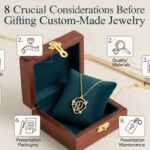Oh not at all. Truthfully, I didn’t learn a lot about contemporary art until I was in graduate school. I grew up in the suburbs of Atlanta. My great uncle was a hobbyist painter and a fan of American wildlife art, and I had a very good high school art teacher. By the time I was 15 or 16, I had a decent knowledge of 20th century art, and used to visit the High Museum, but I certainly wasn’t exposed to art like kids from New York. I was always interested in cartooning as a child and was constantly making things. I took after-school drawing classes in middle school, the way a lot of kids take piano lessons. I got the basics of perspective, shading, and observational illusionism. It was like learning magic tricks, and I loved being totally engrossed in the process and the worlds I was creating. When I wasn’t playing soccer, I definitely identified as an ‘artist’, but like a lot of my friends, I didn’t realize I could do this full-time until I was in college. I just hadn’t been exposed to art or artists with that level of commitment.
I have an old friend to thank for introducing me to your work. While in Boston, he sent me a picture of Orange Diamond Kiss which was showing at Museum of Fine Arts and I’ve been a fan ever since. Your art shows the types of relationships we have in very specific moments. Tell me a bit about why you’ve chosen to paint these moments, your process and how a painting comes to life.
happens. It is kind of interesting to me that the interactions I paint are almost emblematic or static, but hopefully alive with this other kind of energy. The same is sort of true when I paint portraits or even landscapes. I like that tension between something being very familiar or banal, but more significant as a carefully executed painting. And it feels important to make them appear very straight-forward, it’s almost as if they ask for a certain kind of consideration. I like the idea that the paintings don’t announce themselves as particularly interesting or extra-ordinary, though maybe they become so the more you look at them.
Has there ever been a moment or scenario you wanted to paint, but decided not to?
Well, maybe I would say there are images that I have considered or even worked on that I eventually decided against. Ultimately, I do just paint what I want, so it isn’t a question of giving myself permission necessarily. But sometimes the tone of a painting or image isn’t what I expected, or just doesn’t feel right. I have a couple of paintings in my studio now that might not make it. I often do drawings and sit with them a while before I start painting. Sometimes the drawings I am most excited about become less interesting after looking at them for a few days. Maybe they are too earnest, or predictable, or try too hard or something. I know I sometimes paint racy subjects, but there is a tension or balance I like to find. Something kind of both hot and cool. That is true of portraits or more situational images. Maybe both intimacy and detachment.
There is a very creamy, mannequin-esque feel to your figures, creating a very dreamy, almost perfect moment. What role does the smoothness play in your work?
I’ve always liked that painting can be another world. Not just my painting, but a lot of painting I like to look at. And I like that they are images and people made out of paint. I sometimes indulge in finessing the rendering or large areas of color, so there is a lot of attention given to paint and forms or people as they exist in the painting. I have never really strived to be a realist, or to replicate reality. I like that the logic and experience of painting can be something else, but maybe reflects a reality we know or imagine. I think the distillation of information has become more important in my work over the years. Maybe it frames more specific elements about an experience even though it is totally artificial, like a recollection. I was just recently looking at a Giovanni Bellini painting from the Met.
There is so much empathy and feeling in the way he painted the Madonna. But she doesn’t look ‘real’ at all, actually quite mannequin like by contemporary standards. The way she tilts her head, the color on her cheeks, the light around her eyes, the way her fingertips touch.. there is so much understanding in his description. But it is ultimately a fiction. And I think our experience as the viewer is heightened because we can relate to how he made the painting and consider his elaborate decisions in telling the story.
What is a typical day like in the studio?
That has recently changed. For about 15 years I had a studio outside of my apartment in Brooklyn. I would typically keep office hours there most every day, and only stay late if I was on a deadline. I liked the routine, and the set time to work. Now my studio is part of my living space, so 24 hour access changes everything. I find myself working much later into the night and starting late morning or just after lunch. I feel like a grad student again, staying up past midnight. I typically listen to a mix of talk radio and music, and switch back and forth as needed.
What kind of influence the choice of color have in your work?
I take color cues from many places. Posters, old paintings, buildings, fashion designers. For me color is one way to elevate the images. It is part of what can make something that seems ordinary, become more compelling or lasting. It can have a significant power that isn’t obvious, and it is never the logical color combinations that make the most memorable paintings. I was very interested in Josef Albers a few years ago. I thought a lot about the weight of simply placing unexpected colors next to one another. I would say the influence is less direct now, but I do think a lot about color before I begin. It is also probably the thing I wrestle with most as the paintings develop.
Have you ever considered working in black and white?
I do a lot of drawing. Mostly in graphite, and recently as prep work for paintings. But I do make drawings that function on their own. Sometimes simple in pencil, and sometimes more rendered in charcoal. I like how working on paper is so instantly satisfying. The space of the paper works with only a few marks, paintings have to be built in a different way. I have been thinking recently about comic books, and that linear black and white pen drawings might be interesting. But I’m still processing that.
What materials and mediums are you most excited to work with?
That’s easy. Oil paint is the best. It’s just so rich and the color can be finely tuned. I still like flake (lead) white, even though it’s expensive and probably not so healthy. It’s by far the best for blending and mixing subtle color. I sometimes use gouache, and recently ordered a watercolor set. I used to do a lot of watercolor when I was younger. It’s far less forgiving than oil paint, but a nice relief from more labor-intensive oil paintings.
You are part of a group of artists who founded 106 Green in Brooklyn. Tell me about the gallery’s mission and what is currently showing there.
My good friend and artist, Mitchell Wright, has been living in a throwback live-work space in Greenpoint for a long time now. He is really the heart and soul of the gallery. His space is big by New York standards, and he had an extra room near the entrance that was designated as a crit room or showroom. Over drinks, he suggested we start a gallery there, and we talked about it for a while before hosting our first show in early 2009. It was right after the economic collapse, and it felt like an important time for artists to take back some of the power and responsibility for showing work and supporting each other.
We started very casually, showing work from emerging and well-known artists grouped together in ways we found interesting. As it has developed, we now function more like a proper gallery with a consistent schedule, and have even done a few fairs. Originally it was Mitchell, Holly Coulis, and me.. and we recently teamed up with curator and friend, Jon Lutz, who functions now as the gallery director. It is very social, and we show a lot of artists that we know and respect. We take the shows very seriously, but I think the main objective is supporting artists we like and creating some sense of community around the gallery.
My list would be pretty long. Someone unexpected might be Rosalyn Drexler. I love her paintings, and she is such an interesting character. She was a serious part of the pop-art generation, but her 50 plus year career hasn’t been so typical. She’s written plays, erotic fiction, novels.. and was a pro-wrestler for a bit. I would just like to talk to her, maybe have drinks. And I’d like to discuss materials and technique with John Currin. It would be boring as an interview, but he’s a magician. It is so funny to me that his early work was framed in a conversation about ‘bad painting’, because his skill as a painter is totally astonishing.
What is it like as an exhibiting artist at Art Basel?
It’s strange. When alone in the studio, nobody ever thinks about hanging a new painting in a sea of thousands of other works.. or tens of thousands. No matter how realistic about the business, most artists I know maintain some degree of romanticism and idealism around their own work and even their imagined ‘audience’. The sheer number of artists and galleries in the world can be daunting, especially when they are all in one place. It’s a great opportunity to have work seen, but most people are so overwhelmed visually that it’s hard to actually look. Thousands of people cruise right by. When I was
young it was pretty exciting, and then it became depressing, and now I just sort of see it as part of the way things work. It’s a huge live-action catalogue, but good things come from it.
What was your experience like this year?
I’ve been to a number of fairs, but this is the first year I had been to the Miami. I always talked about going, and cancelled last minute.This year I had paintings with Feuer/Mesler at NADA and Snitzer at Basel. Holly was showing work at NADA too with Klaus von Nichtssagend, so we decided to go down. It was actually pretty fun. I’m I’m living in Athens, Georgia, right now.. so I was able to see friends from New York and LA and other places. There was a lot of really good work at Nada and I enjoyed seeing some big blue-chip pieces at Basel by favorite artists of mine. Mostly we had some nice dinners and drinks with friends, and hung out by the pool.
Who or what is your inspiration?
That’s a big question. Generally, I guess I’d say that I am inspired by friends of mine and artists I know who chose to do this very impractical thing with their lives.. and just keep making stuff and being creative. It is such a child-like and human impulse, and really makes no sense in our contemporary culture. As far as artistic influences go, there is a pretty broad range. I like painting. I just like that people keep doing it, and participate in this long history and language. I have many favorites in the histories of European and American Painting, and other histories too. My favorites are always changing, like songs. Just say that I am equally excited to see Kerry James Marshall at the Met, Picabia at Moma, Agnes Martin at the Guggenheim, and Carmen Herrera at the Whitney.










